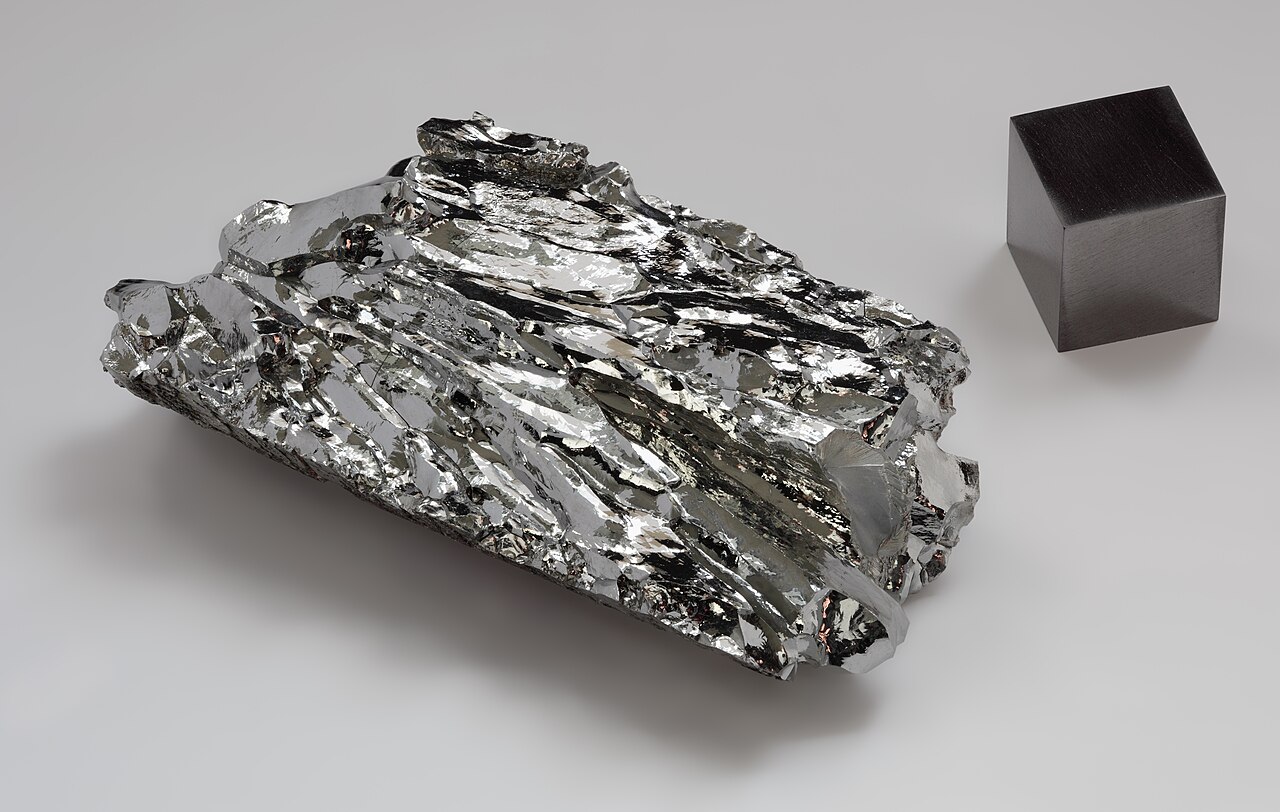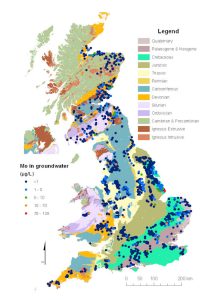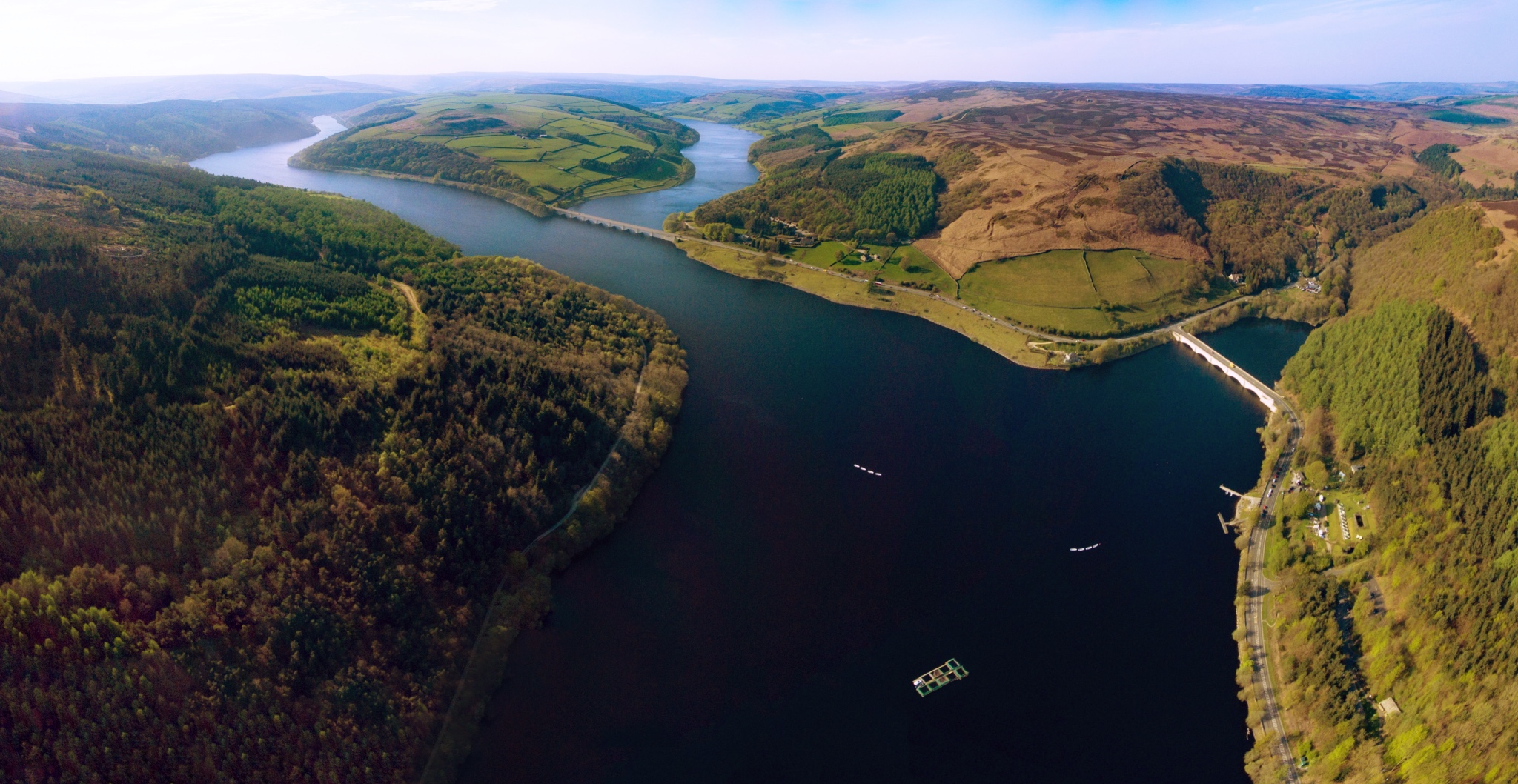BGS, in collaboration with the UK Centre for Ecology and Hydrology (CEH), carried out an investigation of the occurrence of molybdenum in British drinking water. Our reconnaissance investigations showed that molybdenum concentrations were less than 2 μg/L in all analysed samples and are unlikely to pose a problem for water supply in Britain.

Molybdenum. Licensed under the Creative Commons ‘Attribution-NonCommercial-NonDerivative 3.0 (US)’
Drinking water in Britain is taken from both groundwater and surface water sources. Our study involved assessing the concentrations and distributions of molybdenum in these sources as well as in treated water used for public drinking water supply.
Assessments were also made of the occurrence of molybdenum in sediments, rocks and soils.

Variation in concentrations of molybdenum in British groundwater. Data from BGS groundwater database, including groundwater chemistry studies in the Baseline England & Wales and Baseline Scotland series. BGS © UKRI.
Is molybdenum harmful to health?
Molybdenum is considered an essential trace element for human health but, as for many elements, exposure to high doses can be detrimental. In 1993, the World Health Organization (WHO) introduced a health-based guideline value for molybdenum in drinking water of 70 μg/L.
WHO retains a health-based value of 70 μg/L in the 2011 (fourth edition) guidelines but no longer lists a formal guideline value for molybdenum, on the grounds that concentrations in drinking water are usually much below this value.
Molybdenum in the rocks, minerals and soils of Britain
BGS datasets indicate that concentrations of molybdenum in rocks, sediments and soils in the UK are typically less than 10 mg/kg.
Concentrations greater than 20 mg/kg can be found in some fine-grained sediments, especially those containing sulfide minerals. Relatively high concentrations are also found in some ironstones and granites. Concentrations of molybdenum in 65 000 stream sediments from England and Wales (G-BASE data) range up to 309 mg/kg, but with a 90th percentile value of just 2.9 mg/kg.
Monitoring for molybdenum
Samples of treated drinking water were taken from 12 public supply sources across England and Wales, and monitored over an 18 month period. For all sources sampled, observed concentrations were less than 2 μg/L. For three of the 12 sources, concentrations of molybdenum in all samples were less than 0.03 μg/L.

Ladybower Reservoir, Peak District, England. Water from the reservoir is used for river control, drinking water and generating hydroelectricity. © Joel Vardy. Licensed under the Creative Commons Attribution-Share Alike 4.0 International license.
Concentrations of molybdenum in untreated surface waters and groundwaters in Britain are also usually very low.
Analyses of some 11 500 stream-water samples from the BGS G-BASE dataset have a range of 0.05 to 230 μg/L, although the 10 to 90th percentile range is much narrower at 0.08 to 2.45 μg/L, with a median value of just 0.57 μg/L.
Analyses of water samples taken from rivers as part of the Land Ocean Interaction Study typically have median concentrations of less than 1 μg/L, although higher concentrations are observed in some urban rivers, with median values of the order of 3 to 10 μg/L. Molybdenum concentrations under low-flow conditions in some urban rivers are relatively high (tens of μg/L). Potential urban sources of molybdenum in river water include mine drainage and industrial effluents.
Concentrations in British groundwater samples have been found in the range of less than 0.1 to 120 μg/L but with a 10 to 90th percentile range of 0.1 to 1.4 μg/L and a median of just 0.10 μg/L (1700 samples). Relatively high concentrations characterise mine-drainage waters (0.60 to 6.0 μg/L, median 1.4 μg/L).
Molybdenum unlikely to pose a problem
The ranges of molybdenum observed in groundwaters, surface waters and treated drinking water indicate that molybdenum concentrations in Britain rarely occur in excess of, or approaching, the WHO health-based value of 70 μg/L.
Results suggest that molybdenum is unlikely to pose a significant problem for the British water-supply industry and support the WHO conclusion that molybdenum in drinking water does not approach the concentrations likely to be detrimental to health.
The initial funding for the project was provided by Defra (2006 to 2008), with ongoing studies funded by NERC.
Further reading
Smedley, P L, and Kinniburgh, D G. 2017. Molybdenum in natural waters: a review of occurrence, distributions and controls. Applied Geochemistry, Vol. 84, 387–432. DOI: https://doi.org/10.1016/j.apgeochem.2017.05.008
Smedley, P L, Cooper, D M, and Lapworth, D J. 2014. Molybdenum distributions and variability in drinking water from England and Wales. Environmental Monitoring and Assessment, Vol. 186(10), 6403–6416. DOI: https://doi.org/10.1007/s10661-014-3863-x
Smedley, P L, Cooper, D M, Ander, E L, Milne, C J, and Lapworth, D J. 2014. Occurrence of molybdenum in British surface water and groundwater: distributions, controls and implications for water supply. Applied Geochemistry, Vol. 40, 144–154. DOI: http://dx.doi.org/10.1016/j.apgeochem.2013.03.014
Contact
Contact Dr Pauline Smedley for further information

